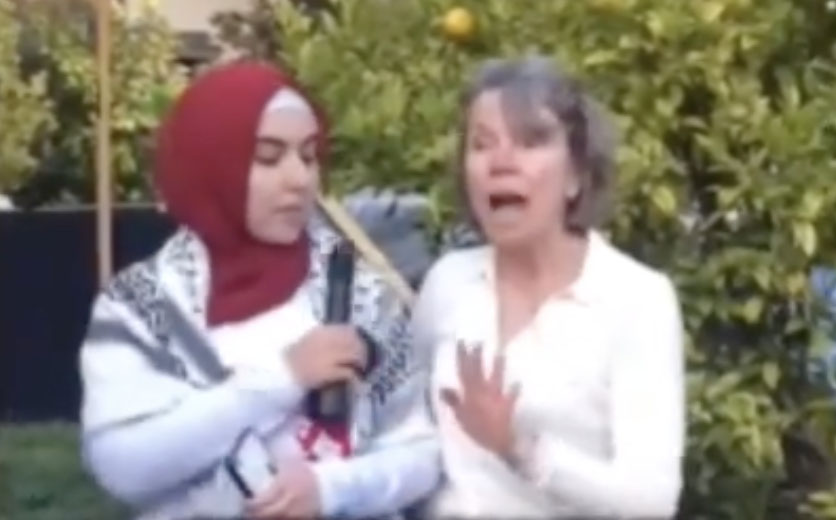In the debate over a possible Israeli withdrawal from Gaza — 80 percent of which was already surrendered by Israel in 1994 according to the Gaza-Jericho First policy — little has been said about Gaza’s Jewish roots. Media reports typically depict Gaza as an Arab territory to which Israel has no claim. But the truth is far different.
Gaza has been a part of the Land of Israel since biblical times. The borders of Israel, as defined in God’s promise to Abraham in Genesis 15:18-21, stretch from the Euphrates River in the east to the “River of Egypt” in the west, which refers to either the Nile or the Wadi el-Arish, both of which are west of Gaza — meaning that the borders of the Land of Israel clearly include all of Gaza. In Joshua 15:47, God specifies the areas that are the inheritance of the tribe of Judah — including “Gaza [Azza, in Hebrew] with its towns and villages.” In Judges 1:18, “Gaza with its border” is listed as part of the territory of Judah. In Kings I, 5:4, Gaza is mentioned by name as one of the areas ruled by King Solomon. The area came under foreign occupation during some periods, but the Jewish King Yochanan, brother of Judah the Maccabee, recaptured Gaza in 145 C.E. and sent Jews to rebuild the community there.
The Jews of Gaza were expelled by the Romans in 61 B.C.E., but they returned, and the Roman Emperor Constantinus the Great tried, but failed, to convert them to Christianity in the fourth century C.E. The remains of ancient synagogues have been found in Gaza, including a remarkable mosaic floor adjacent to the Gaza pier, which dates back to approximately 508 C.E.
Throughout the centuries, there was a large Jewish presence in Gaza — in fact, it was the largest Jewish community in the country at the time of the Muslim invasion (seventh century C.E.). Medieval Christian visitors to the region mentioned the presence of the Jewish community in Gaza. Giorgio Gucci of Florence, in 1384, praised the wine produced by the Jews of Gaza — Bertandon de la Brooquiere (1432), Felix Fabri (1483), Martin Baumgarten (1507) and George Sandys (1611).
The Jews of Gaza were also mentioned in the writings of Jewish travelers, such as Benjamin of Tudela, Ovadia of Bartenura (1488), and Meshullam of Voltera (1481), who wrote of their real estate holdings, wine industry and hilltop synagogue. The Egyptians, under Ibrahim Pasha, destroyed that synagogue in 1831; interestingly, the Arab neighborhood built on its ruins is called Khart Al Yahood — “the Jewish neighborhood.”
The medieval Jewish communities of Gaza included many famous rabbinical authorities, among them the kabbalist Rabbi Avraham Azoulai, author of the famous book Hessed L’Avraham, and Rabbi Yisrael Najara, author of the 16th century hymn, “Kah Ribbon Olam,” which to this day is sung at Sabbath tables throughout the Jewish world. Rabbi Najara is buried in Gaza.
The fact that the most infamous false messiah in Jewish history, Shabtai Zvi, launched his movement in Gaza in the 1660s indicates that there was a sizable Jewish community there at the time.
Writing about the question of whether or not living in Gaza fulfills the biblical requirement [mitzvah] to live in the Land of Israel, the famous 18th century sage Rabbi Yaakov Emden, in his book, “Mor Uketziya,” wrote: “Gaza and its environs are absolutely considered part of the Land of Israel, without a doubt. There is no doubt that it is a mitzvah to live there, as in any part of the Land of Israel.”
When the Jews were expelled from Spain and Portugal in the 1490s, some of them moved to Gaza, and after the Ottoman occupation of Gaza in 1517, there is evidence of continuing Jewish residence there. The Jews of Gaza were forced to leave the area when Napoleon’s army marched through in 1799, but they later returned.
There were Jewish neighborhoods in Gaza in the late 1800s, a Jewish school was established in 1910, and a Jewish bank was created in 1914. Beginning in 1906, the chief rabbi of the Gaza Jewish community was the famous Nissim Ohana, who later served as chief rabbi of Cairo and then Haifa, Israel. Deported by the Turks after World War I erupted, the Jews returned in 1919, began operating the area’s windmill and hotel, and established a Jewish day school called Shimshon, named after the biblical hero Samson who died in Gaza.
When Palestinian Arabs threatened to slaughter the Jews of Gaza during the 1929 pogroms, the British ruling authorities forced the Jews to leave. But in 1946, the Jews returned, establishing the town of Kfar Darom in the Gaza Strip, which lasted until 1948, when Egypt occupied the area. Kfar Darom was established on the site where a Jewish town of the same name had existed in the third and fourth centuries C.E. — indeed, the Talmud, in Tractate Sota, refers to a famous rabbinical sage as Eliezer, the son of Yitzhak of Kfar Darom.
During the Egyptian occupation of Gaza in 1949-1967, Egypt refused to let Jews live in the area. Only Arabs were permitted. Interestingly, the international community said nothing about this Egyptian form of apartheid. Finally, after the 1967 war, when Israel took over the territory, Jews were able to return to Gaza and rebuild communities there.
From the biblical era through the Middle Ages and into modern times, Gaza has always been an integral part of the Jewish homeland. Even when they were persecuted or deported, the Jews fought tenaciously to return and rebuild their homes in Gaza. Today’s Jewish neighborhoods in Gaza have deep roots indeed.
Morton A. Klein is national president of the Zionist Organization of America.





















 More news and opinions than at a Shabbat dinner, right in your inbox.
More news and opinions than at a Shabbat dinner, right in your inbox.